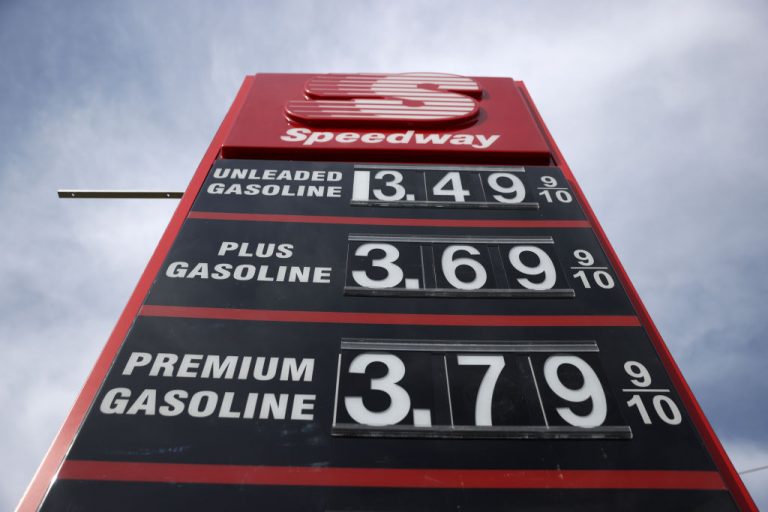A gas station in Los Angeles’ trendy Beverly Hills and West Hollywood neighborhoods was photographed selling Super Plus for $5.99 & 9/10 per gallon during the Memorial Day weekend.
Breitbart photographed the Mobil station across from the Beverly Center shopping mall in Los Angeles having set what was close to a milestone for its wares. The station, self-serve and without a carwash, sold regular unleaded for a wallet-shocking, yet discounted price of $5.29 per gallon.
While LA residents pay a heavy premium for gasoline on a good day, the delta between the national average of $2.98 per gallon is usually not as severe as the photos may indicate. The station appears to be something of an outlier. Fuel price data service GasBuddy reports LA’s current average is a bearable $4.22 per gallon.
GasBuddy says gasoline inventories are down across the country approximately 9 percent year-over-year and are 3 percent lower than the 5-year average, while oil production has decreased to 11 million barrels per day, down close to 400,000 barrels year-over-year.
Low inventories and production are in spite of excellent oil prices. WTI Crude Oil futures actually traded at a negative at the April of 2020 contract close when fear from the emerging SARS-CoV-2 pandemic had been kettled to hysteria.
Success
You are now signed up for our newsletter
Success
Check your email to complete sign up
A May of 2020 article by globalist bloc World Economic Forum, headlined by a photo of Chinese Communist Party propaganda about how the regime had claimed to handle the situation in Wuhan, lauded world governments’ enactment of lockdowns, stating, “there are now roughly 3 billion people in some form of lockdown around the world.”
Despite all the fear, panic, and persistent bearishness the unprecedented oil price crash caused, prices have rebounded sharply, closing at $35.19 per barrel one month later. WTI Crude has posted a monthly gain for 11 of the last 14 months, finishing June strong at $67.00 per barrel.
According to GasBuddy’s data, national gasoline prices are up 16.8 cents per gallon month-over-month and $1.17 year over year.
The Opec Plus oil cartel is reported to have agreed to increase oil output during a half hour meeting on June 1, adding 1.2 million barrels per day to production through July as oil prices posting the first market day of June are the highest they’ve been since October of 2018.
$5 and $6 per gallon gasoline is no stranger to Canadians, however. GasBuddy reports the lowest price in Canada is in the mostly-conservative province of Alberta at 124.9 cents per liter. The highest is in neighboring British Columbia at 145.8 cents per liter. There are four liters in a U.S. gallon.
The United States has roughly 9 times the population as Canada, with a ratio of approximately 325 million to 37 million. Yet the U.S. produces only three times as much oil as the True North. Canada produces 3.86 million barrels per day of crude compared to the United States’ 11.1 billion.
On a per capita basis, production works out to slightly more than 102 barrels per day per 1,000 people for Canada compared to 28 for the United States, while consumption is extremely close between the two at 71 barrels per day per 1,000 people for Canada and slightly less than 69 for the United States, according to data from Nation Master.
















